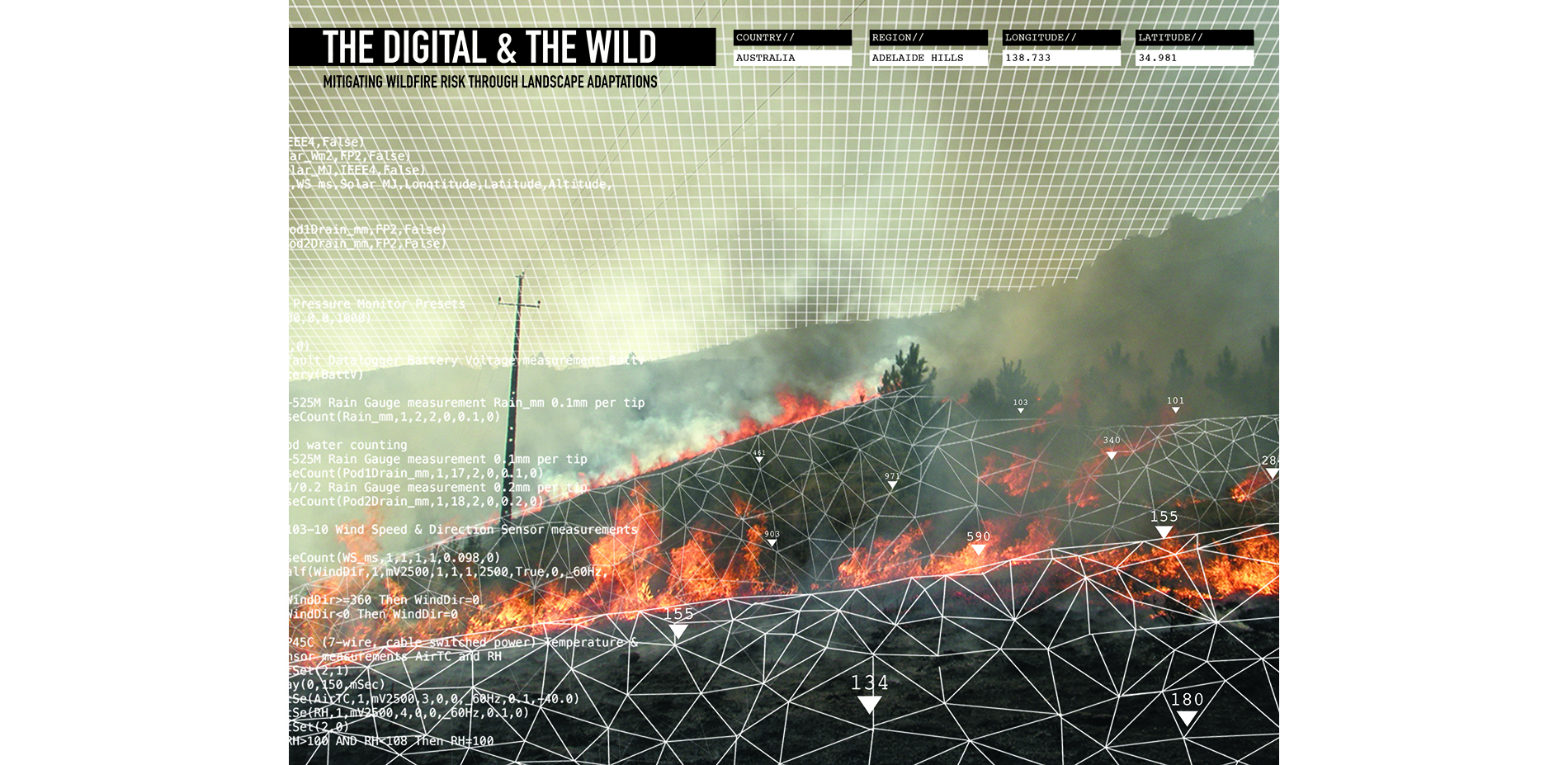
The Digital & The Wild
Mitigating wildfire risk through landscape adaptations
Photo Credit: Jordan Duke, Student ASLA
Media: Please submit high-resolution image requests to images@asla.org.

Landscape Patterns and Fires in the Wildland-Urban Interface
Conflict arises where the fire prone native vegetation is adjacent to urban settlements. Among the additional 36 states parks found in the high risk zone, Cleland Conservation Park acts as a testing ground for all parks in the Adelaide Hills.
Photo Credit: Jordan Duke, Student ASLA
Media: Please submit high-resolution image requests to images@asla.org.

Wildfires: Patterns of Ignition & Movement
Specific variables in the environment affect fire ignition and spread. Fire spread is most impacted by topography and wind. Ignition, however, is impacted by many variables that are locational, anthropogenic and environmental.
Photo Credit: Jordan Duke, Student ASLA
Media: Please submit high-resolution image requests to images@asla.org.
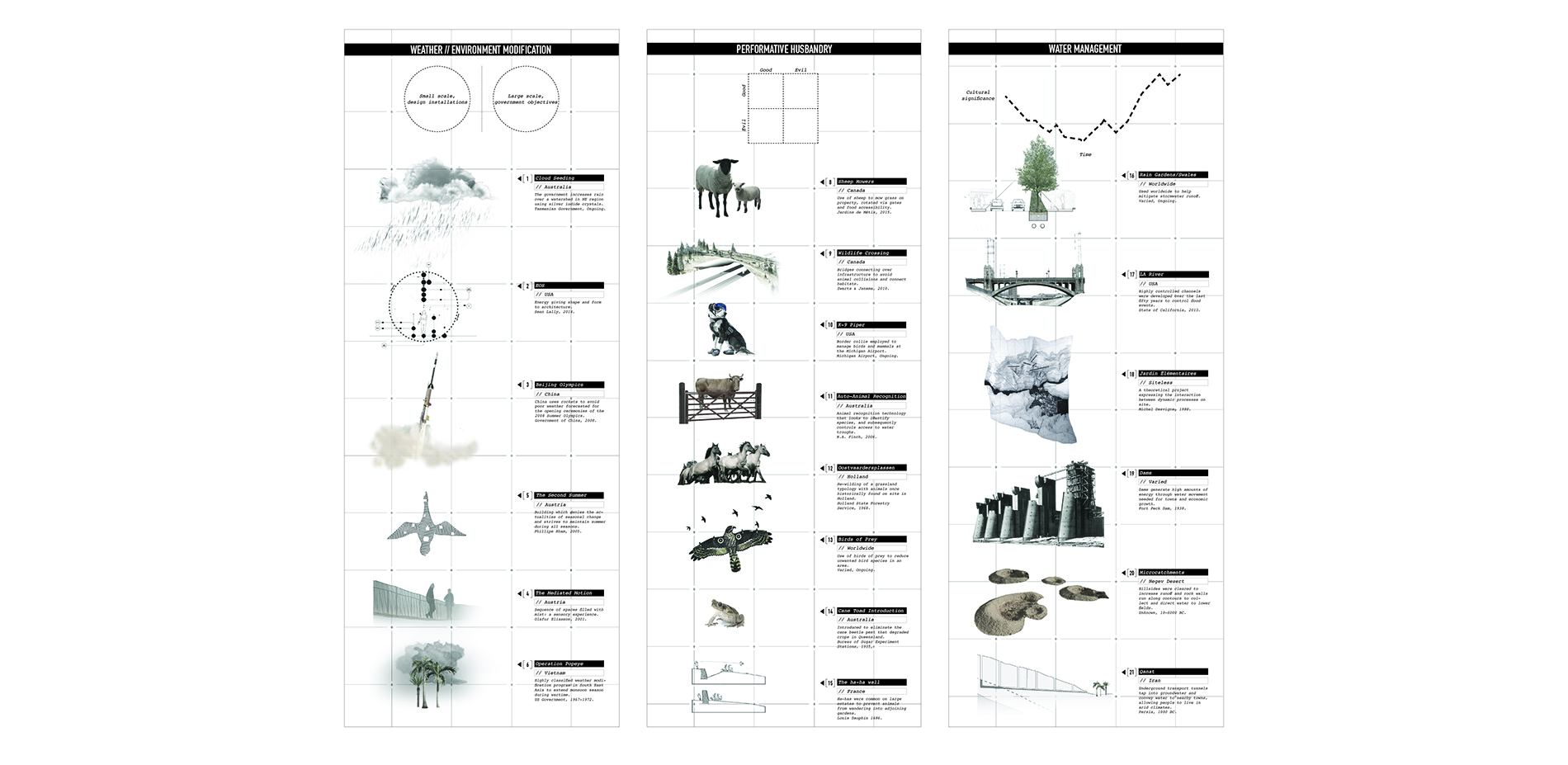
Insight From Alternative Fields of Knowledge
Pulling from three external fields - 'weather modification', 'performative husbandry', 'water management' - the project evaluates historic examples. There is an acknowledgement that risk is not eliminated, but rather it shifts from large, catastrophic wildfire events to manageable, everyday risk levels.
Photo Credit: Jordan Duke, Student ASLA
Media: Please submit high-resolution image requests to images@asla.org.
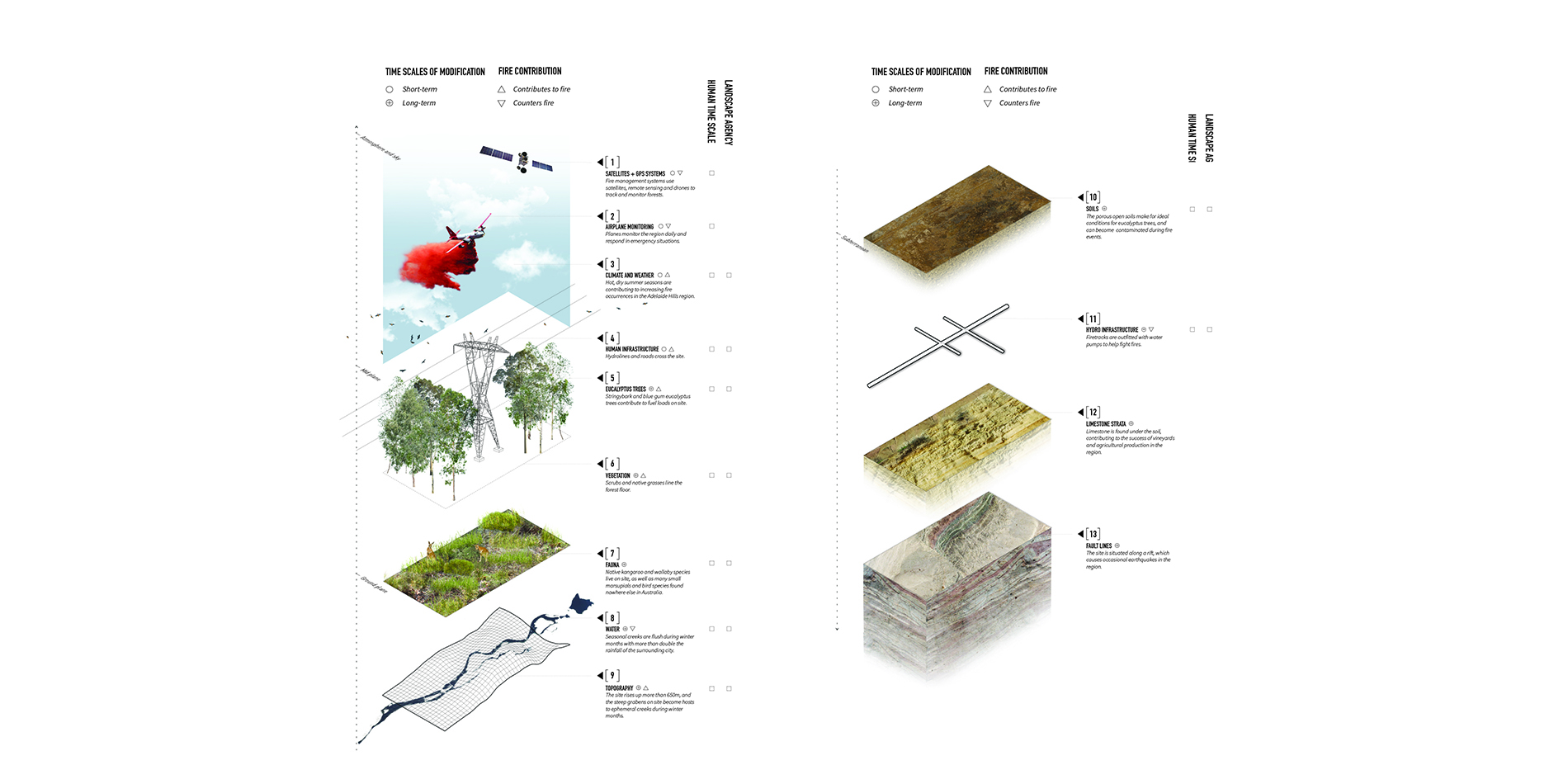
Documenting On-site Elements Within the Agency of Landscape Architecture
Elements on-site were used to generate risk reduction strategies within the agency of landscape architecture and within the timescale of a human life; in this case, altering weather, water, soils, flora and fauna patterns.
Photo Credit: Jordan Duke, Student ASLA
Media: Please submit high-resolution image requests to images@asla.org.
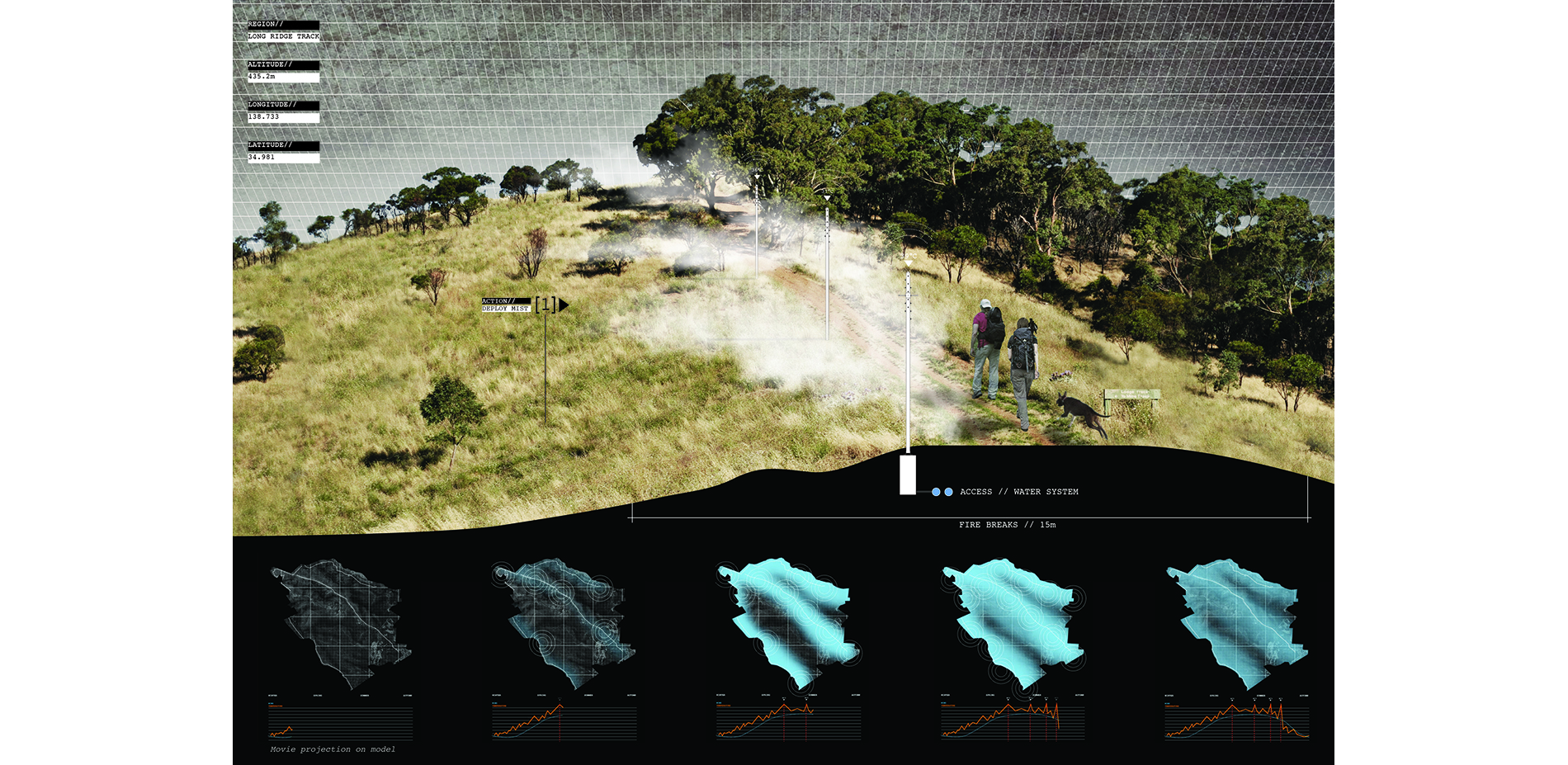
Weather Modifiers // Short-term Strategies
Weather modifiers form a continuous datum along ridges and valleys. Using the regular SW ocean breeze as a vector, the devices respond by dispersing mist across the site, increasing the humidity levels on extreme heat days.
Photo Credit: Jordan Duke, Student ASLA
Media: Please submit high-resolution image requests to images@asla.org.
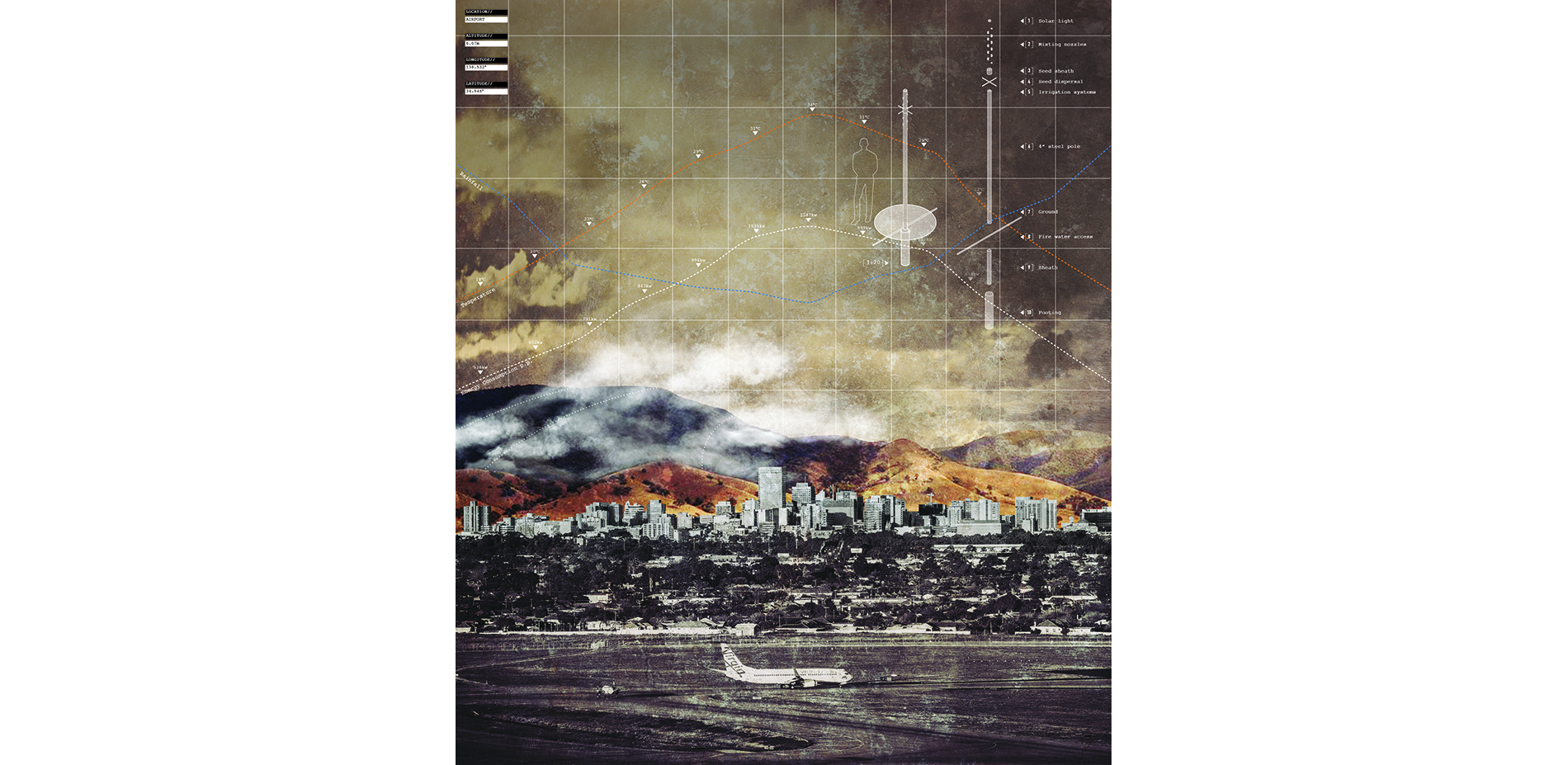
Weather Modifiers // Making Visible the Invisible
Registering from a distance, at night as the weather modifiers are visible from the hills in the city below. The light intensity indicates daily energy usage, visualizing energy consumption used during the day.
Photo Credit: Jordan Duke, Student ASLA
Media: Please submit high-resolution image requests to images@asla.org.
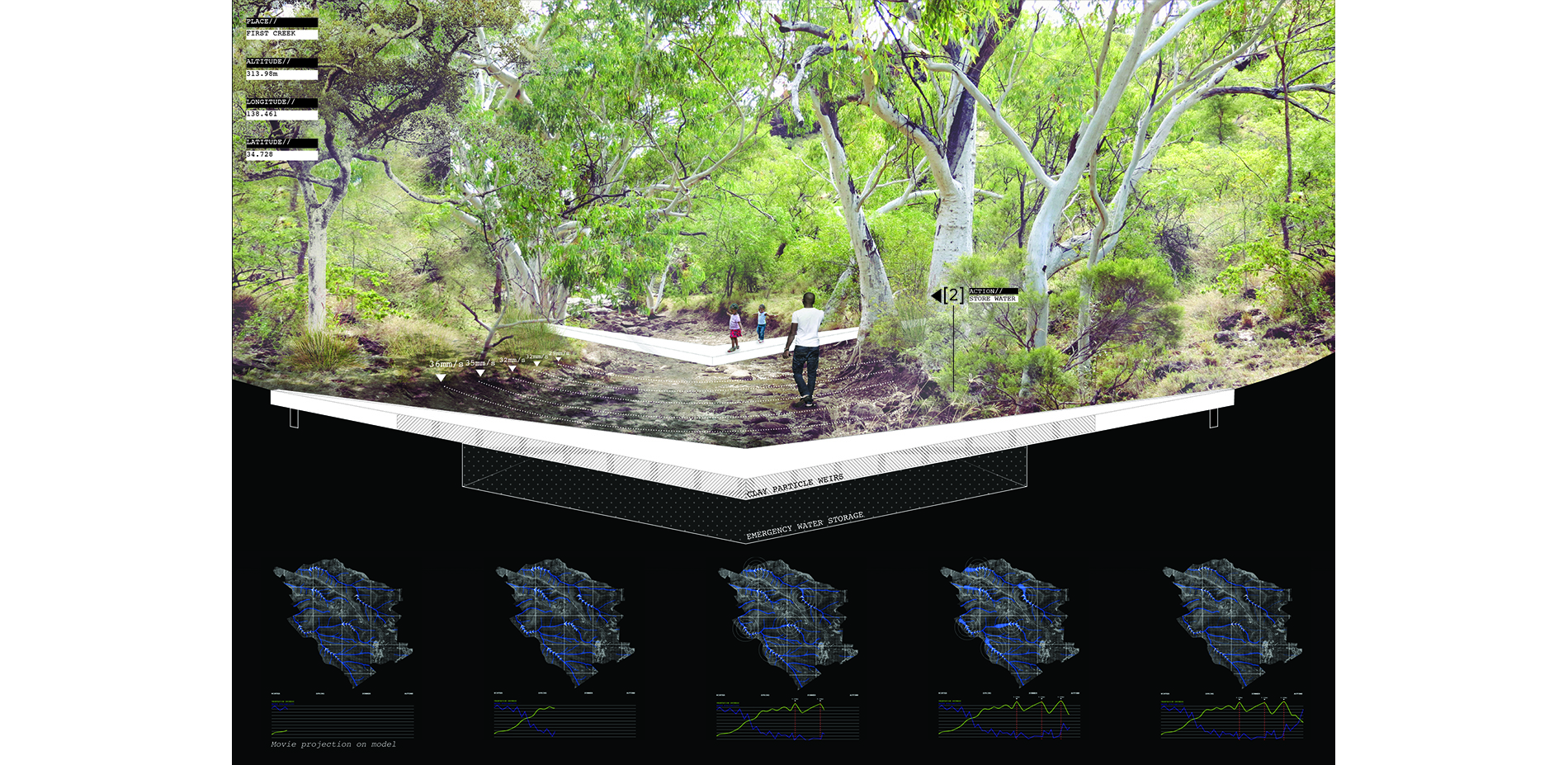
Erosion Accelerants // Short-Term Strategies
Erosion accelerant devices are located within the valleys, capturing water during the winter rainy season; excess water is stored below for release during emergency wildfire events. Off-season, water can be used as swimming holes and wildlife refuge pools.
Photo Credit: Jordan Duke, Student ASLA
Media: Please submit high-resolution image requests to images@asla.org.
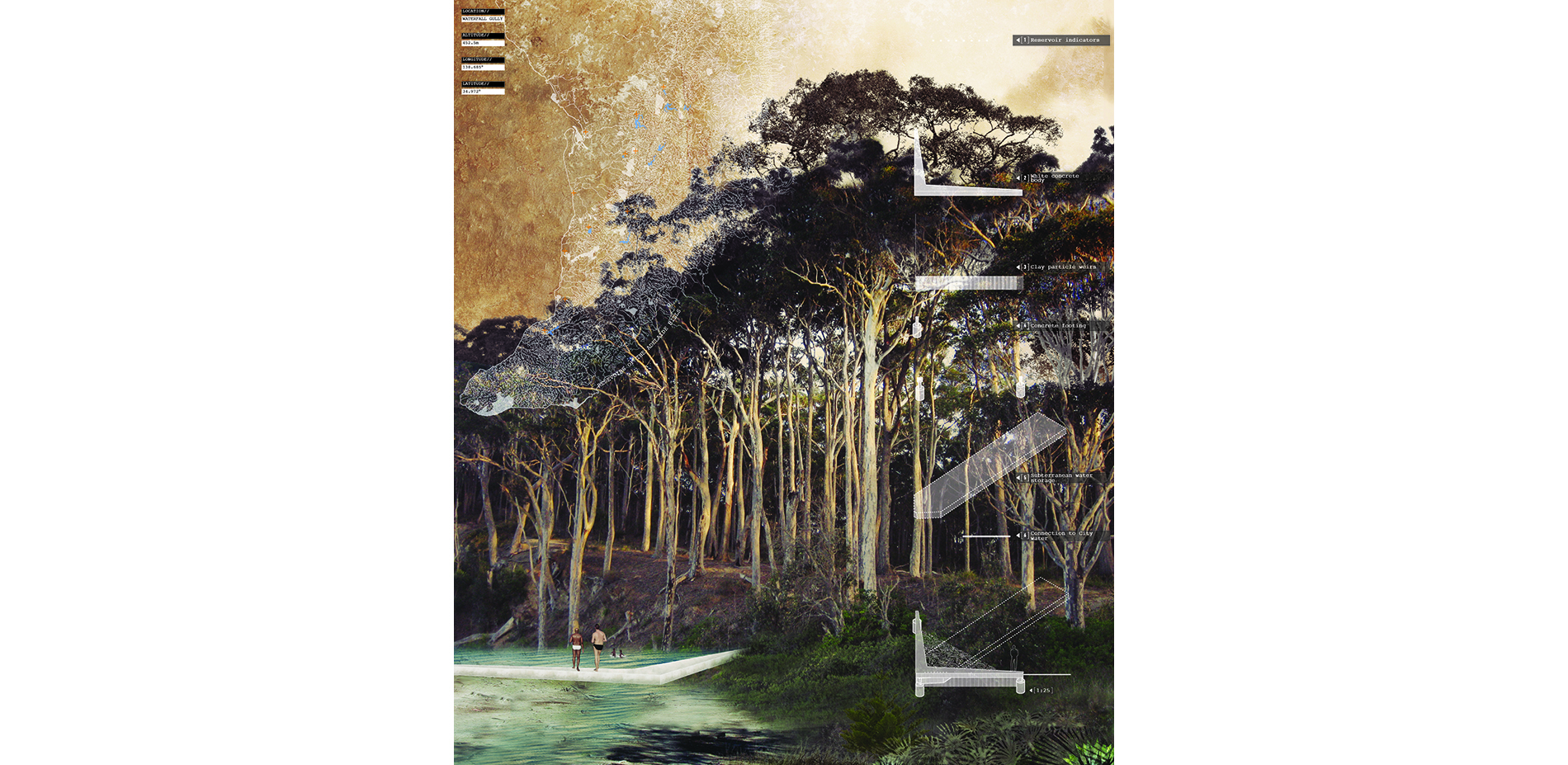
Erosion Accelerants // Making Visible the Invisible
Indicating water availability in the regional water reservoirs, the number of pools activated within the erosion accelerants signal to park users times of surplus an scarcity.
Photo Credit: Jordan Duke, Student ASLA
Media: Please submit high-resolution image requests to images@asla.org.
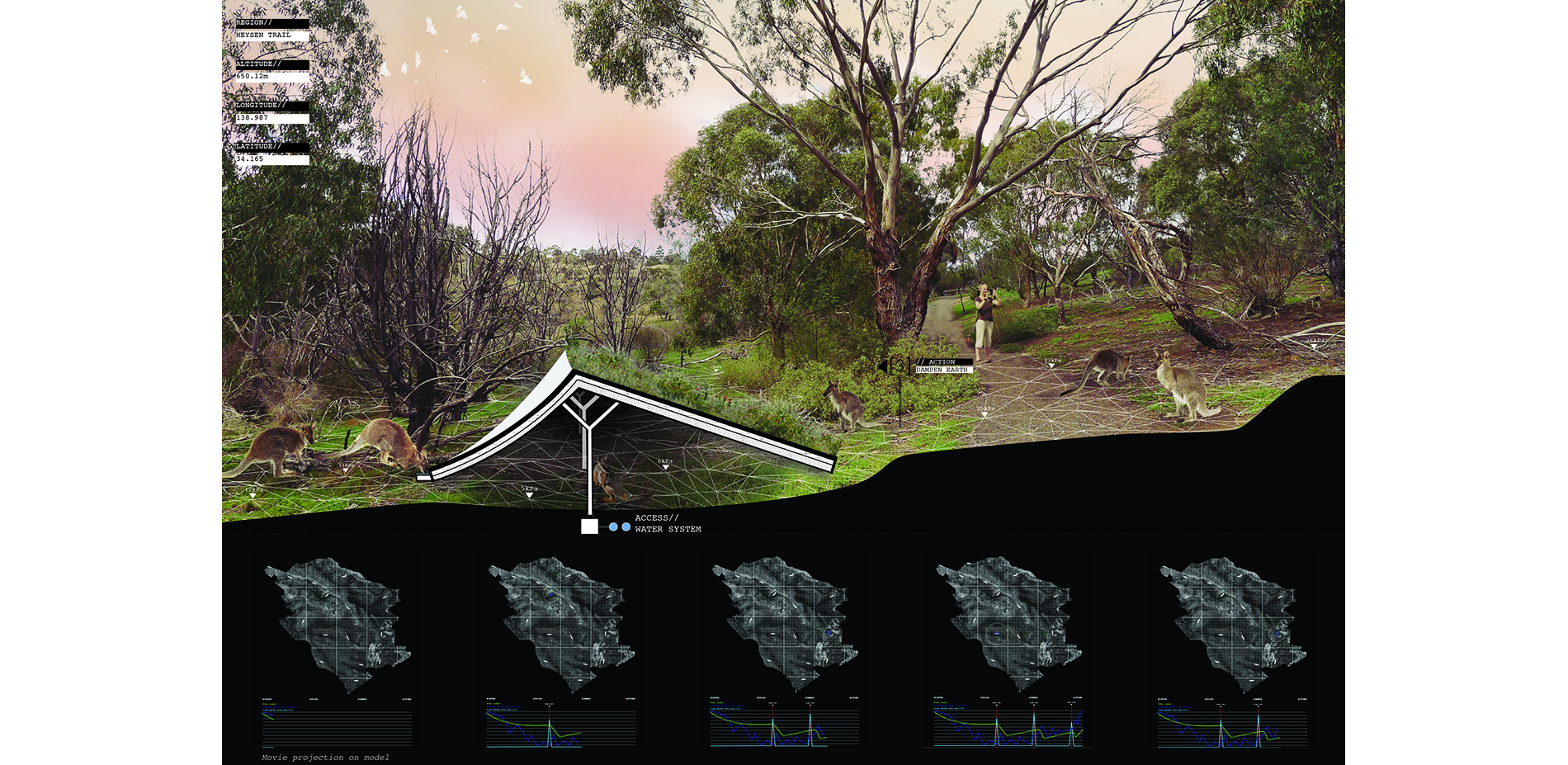
Artificial Watering Holes // Short-term Strategies
These inverted land bridges produce fresh, green vegetation and provide a watering trough - both which attract native wallabies and kangaroos. During wildfires, animals seek out cool and dark areas to hide and these devices double as a refuge for animals before and after wildfires.
Photo Credit: Jordan Duke, Student ASLA
Media: Please submit high-resolution image requests to images@asla.org.
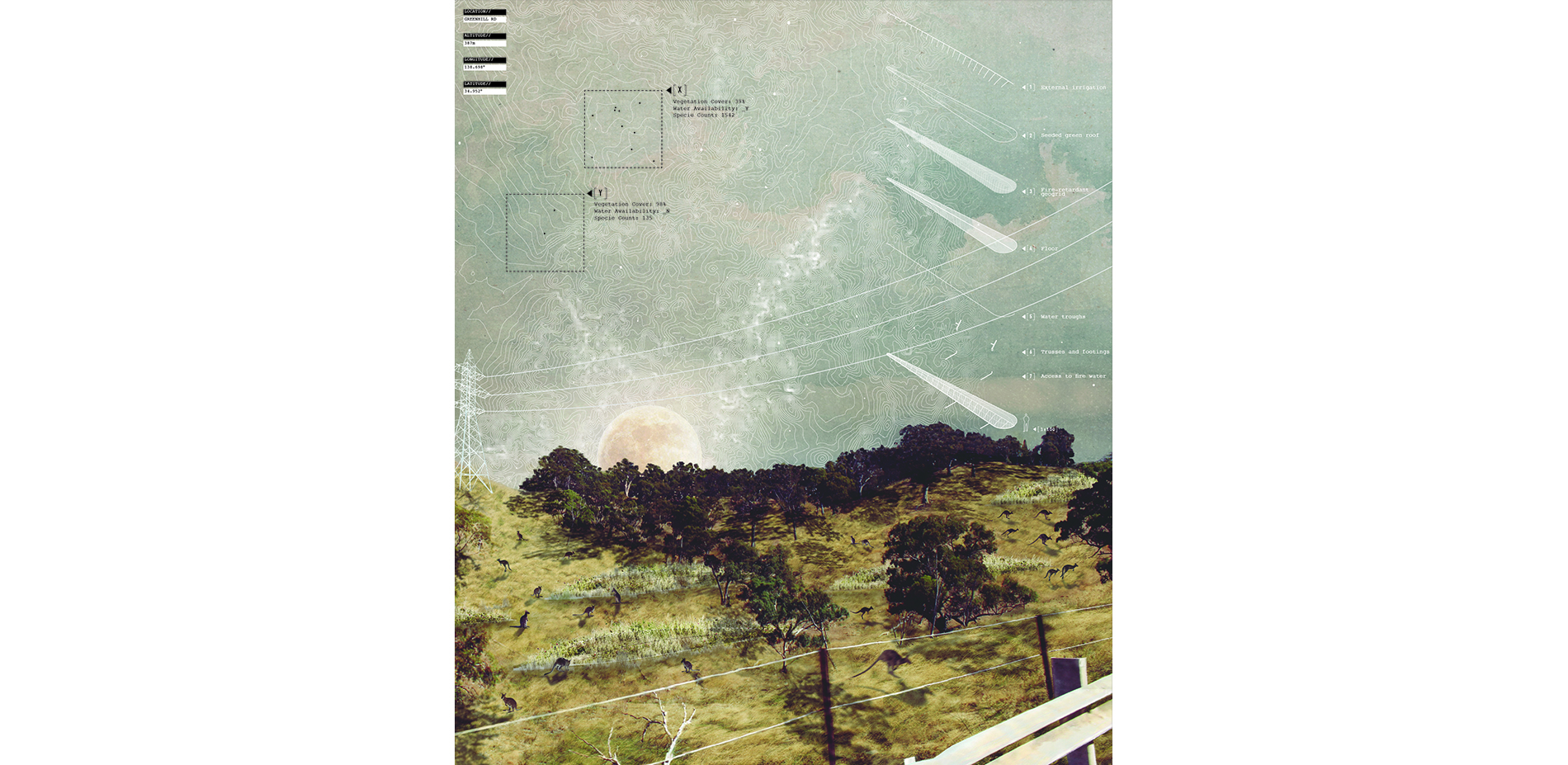
Artificial Watering Holes // Making Visible the Invisible
The artificial watering holes are located in highly visible areas such as roadways and paths. The abundance of green grass and a surreal number of wallabies on site indicates an area high in fuel loads; passerbys acknowledge care must be taken to avoid accidental ignition.
Photo Credit: Jordan Duke, Student ASLA
Media: Please submit high-resolution image requests to images@asla.org.
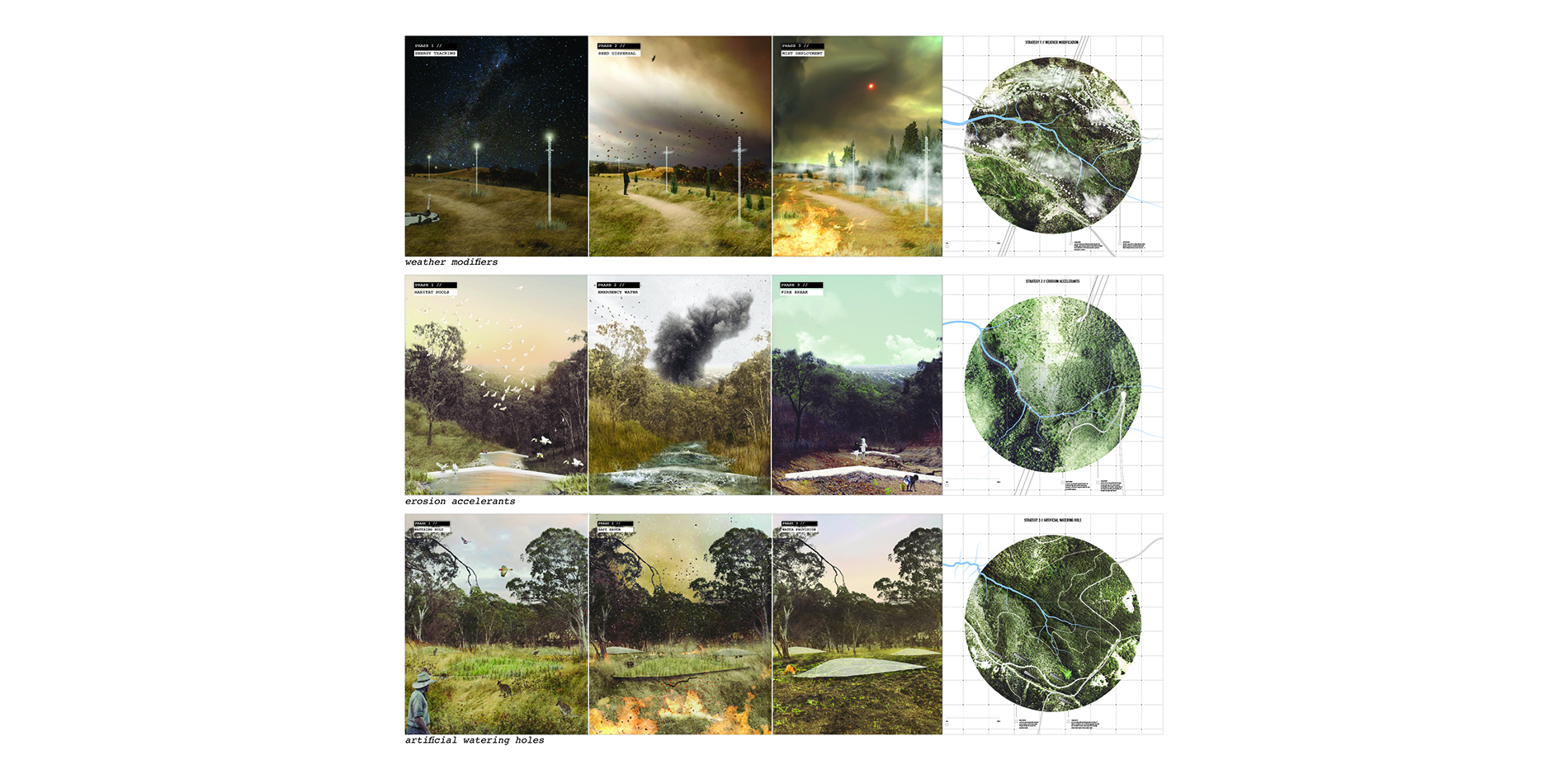
Long-term Strategies // Deployment
The devices adapt the landscape over time to generate further longterm fire risk reduction strategies. The weather modifiers disperse cypress seeds; the erosion accelerants erode vegetation opening new fire breaks in the forest; and access to water attracts animals, bringing down fuel loads in the area.
Photo Credit: Jordan Duke, Student ASLA
Media: Please submit high-resolution image requests to images@asla.org.
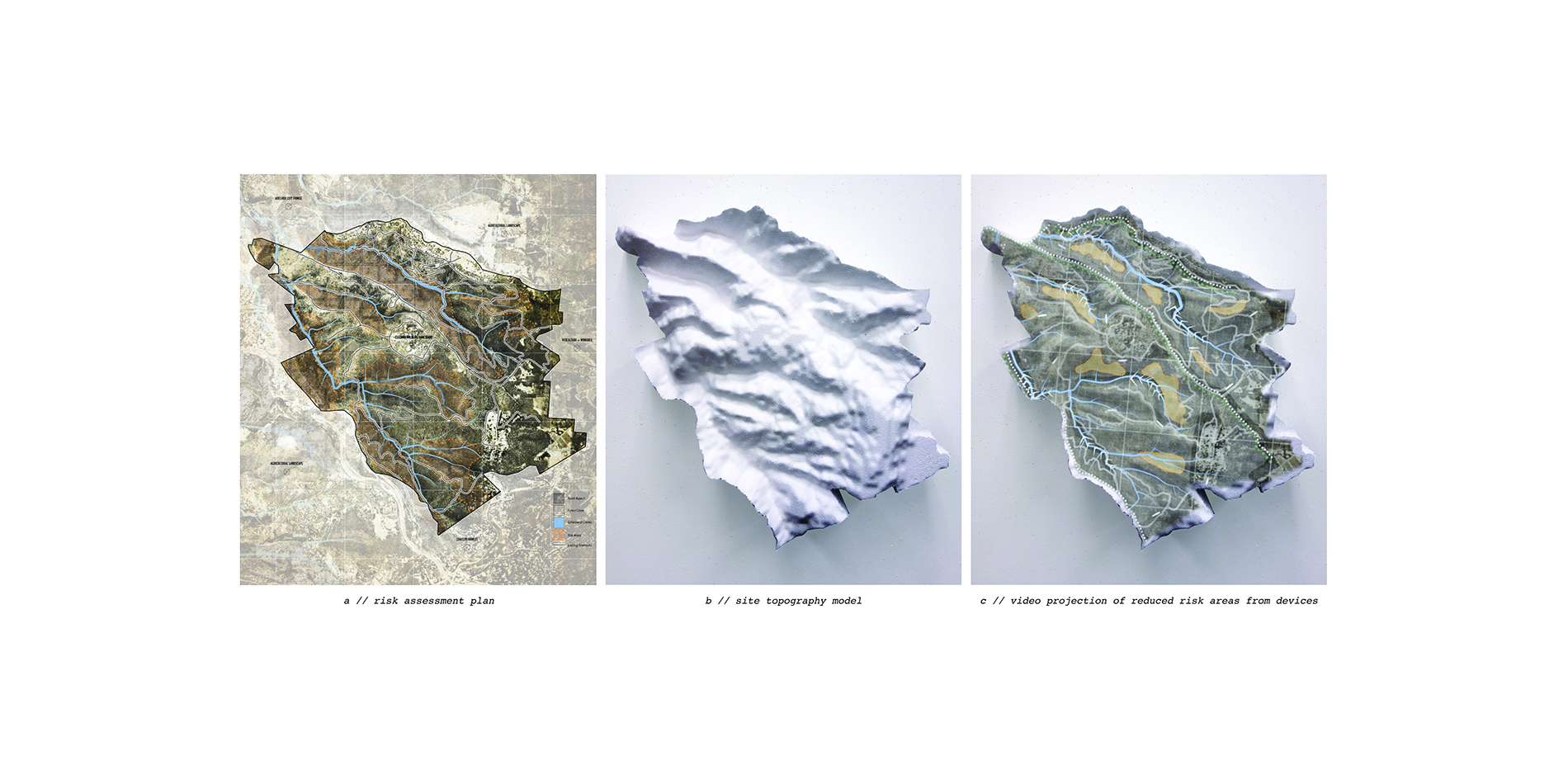
Reducing Risk in Wildfire Prone Areas
In rejection of a final master plan, a film projected onto the site model indicates no fixed outcome. Rather, the projection indicates change through time and a reduction of overall risk; the devices adapt the landscape to manage wildfires. Through a data feedback loop, the site continues to be evaluated.
Photo Credit: Jordan Duke, Student ASLA
Media: Please submit high-resolution image requests to images@asla.org.
















